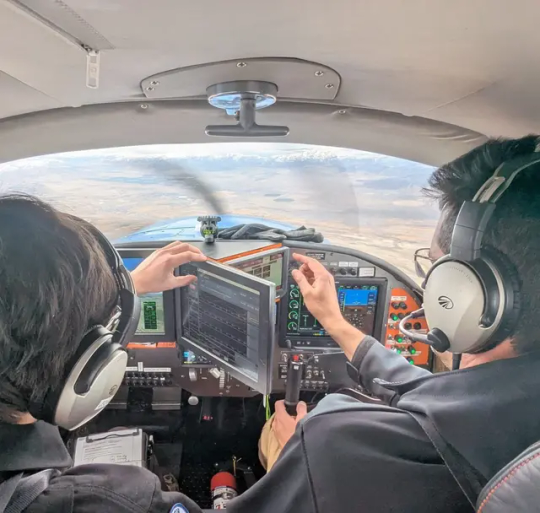Don't wanna be here? Send us removal request.
Text
How Aerospace Systems Engineers Are Powering Urban Air Mobility
Urban Air Mobility (UAM) is rapidly changing how we imagine transportation in the cities of tomorrow. From electric vertical take-off and landing (eVTOL) vehicles to autonomous flying taxis, the dream of taking flight across a crowded skyline is becoming a reality. But behind the sleek designs and futuristic tech lies a group of unsung heroes: aerospace systems engineers and avionics systems engineers. These professionals are playing a critical role in shaping the future of air mobility by creating the complex systems that make safe, reliable, and efficient flight possible within urban environments.

What Is Urban Air Mobility?
Urban Air Mobility refers to the use of advanced air vehicles to transport people or goods within metropolitan areas. Unlike traditional aircraft, UAM vehicles are designed for short distances, low altitudes, and high-frequency operations. Think of them as airborne rideshare vehicles or cargo drones weaving through skyscrapers to avoid traffic congestion on the ground.
UAM has the potential to reduce commute times, ease pressure on road infrastructure, and lower emissions—especially when electric propulsion is used. However, integrating these vehicles safely into already busy city airspace requires solving many complex challenges. This is where aerospace systems engineering steps in.
The Role of Aerospace Systems Engineering in UAM
Aerospace systems engineering is the field that designs and manages the entire architecture of an aircraft or space vehicle. From propulsion systems and structural components to flight controls and safety mechanisms, aerospace systems engineers look at the big picture and ensure that every part of a flying vehicle works together as a unified, safe system.
In the context of UAM, aerospace systems engineers are responsible for:
Designing lightweight, energy-efficient airframes suitable for short trips.
Ensuring safety and redundancy in case of system failures.
Integrating electric propulsion systems and batteries.
Balancing payload, speed, and range requirements.
Coordinating with air traffic systems for flight routing in urban zones.
These engineers must also factor in regulatory requirements, noise levels, weather impacts, and passenger comfort—all while making the systems affordable and scalable for mass deployment.
Avionics Systems Engineers: The Brain Behind the Flight
While aerospace systems engineers focus on the entire aircraft ecosystem, avionics systems engineers are the specialists who develop the electronic systems that control everything from navigation to communication. In UAM vehicles, avionics systems engineers are crucial to enabling safe, automated, and intelligent flight.
They design and maintain systems such as:
Autopilot and autonomous flight control.
Obstacle detection and avoidance sensors.
GPS and inertial navigation systems.
Real-time communication with control centers.
Monitoring of onboard systems and diagnostics.
Given that many UAM vehicles aim for semi- or fully autonomous operation, avionics systems engineers are essentially writing the rules for how these aircraft think and respond in real-time. Without their input, the dream of on-demand air taxis flying autonomously across cities wouldn’t be possible.
Challenges and Innovations in UAM Engineering
Urban Air Mobility poses engineering challenges that go beyond traditional aviation. These include:
Designing for vertical takeoff and landing in tight urban areas.
Creating ultra-lightweight materials that support electric power.
Developing advanced flight management software that can interact with urban traffic control.
Dealing with electromagnetic interference from dense city environments.
Ensuring cybersecurity for onboard digital systems.
To meet these challenges, aerospace and avionics systems engineers are working closely with robotics experts, AI developers, urban planners, and safety regulators. They are developing modular designs, testing battery innovations, and simulating thousands of flight hours before even launching a prototype. Systems integration has never been more complex—or more exciting.
Engineering the Skies of the Future
As cities grow denser and transportation needs evolve, UAM offers a promising alternative to ground-based travel. But it’s not just a matter of building fancy flying vehicles. It’s about creating highly integrated, safe, and smart systems capable of coexisting with existing transportation infrastructure.
Aerospace systems engineers and avionics systems engineers are the driving force behind this evolution. Their work goes beyond innovation—it’s about precision, safety, and vision. They’re not just making machines fly; they’re creating the blueprint for how we move in the future.
Conclusion: Building the Future, One System at a Time
Urban Air Mobility is not a distant dream—it’s already on the horizon. And while we may see sleek flying vehicles taking to the skies, the real story lies behind the scenes. Aerospace systems engineers and avionics systems engineers are ensuring that every flight is safe, smart, and seamlessly integrated into our daily lives. As cities take to the skies, these engineering minds will continue to lead the way, designing a future where air travel is just another part of your daily commute.
1 note
·
View note